
Brazil
Brazil is a vast country of more than 215M people, 2.7% of all humans. We saw only the Northeastern tip of it. But what we saw has us regretting that we did not go further south and take in more of this wonderful and diverse country. We enter Brazil through the resort island of Fernando de Noronha, about 200nm from the Brazilian mainland.
Fernando de Noronha
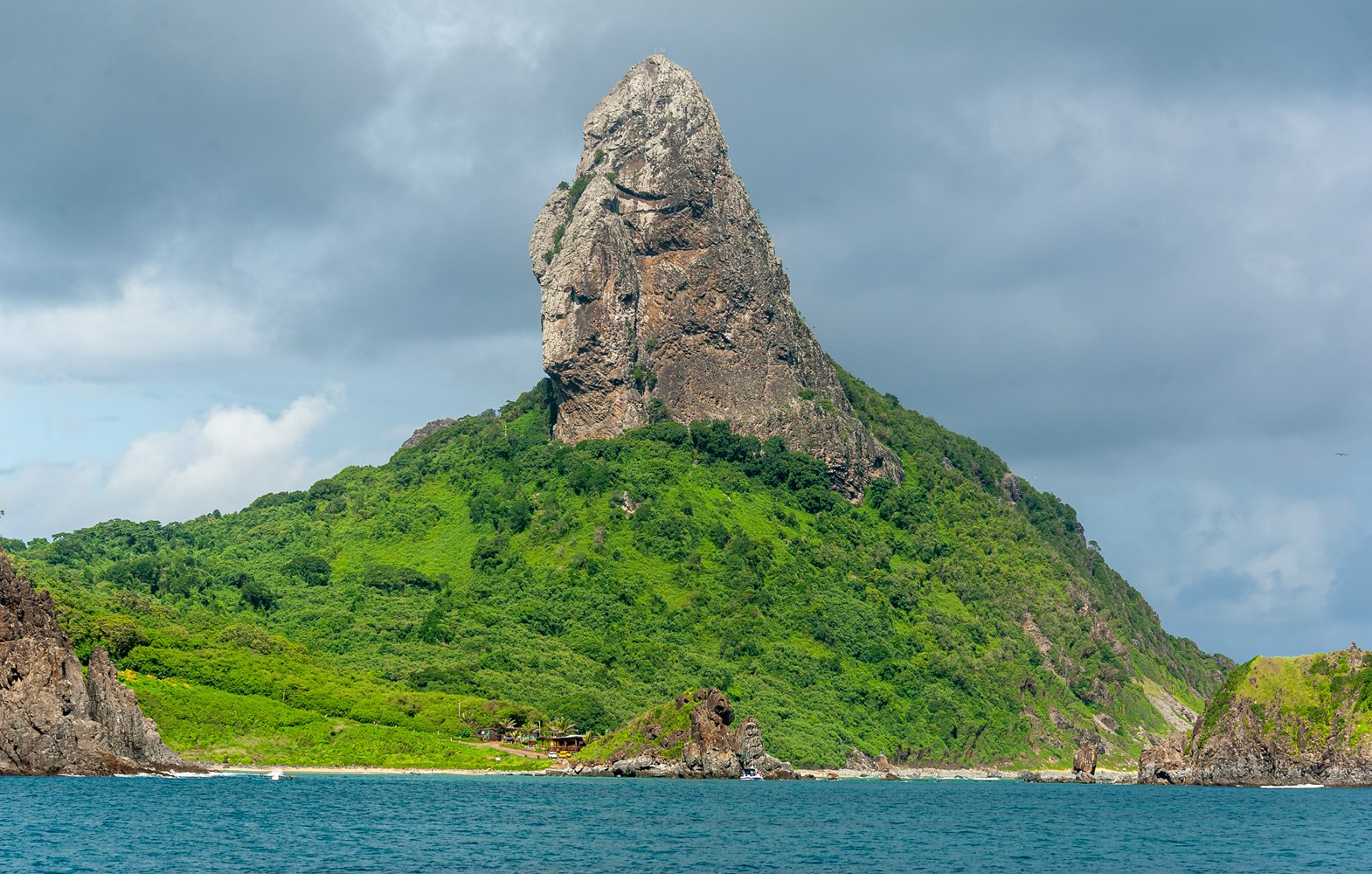
First we capture Halfwing, our injured grey gull who has been living in the dinghy since she collected the wind generator, and put her in a bag. Then we let down the dinghy and to huge applause from the passing tourist boats, Merel rows us to a rocky part of the shore that looks like it might make a home for our cripple. In a protected area like this she might be able to live on the ground. So we leave her by a little trickling stream splashing merrily down the cliff to the rocky beach through some dense underbrush. No sooner is she out of the bag than she is scratching around for food. She will never fly again but maybe she can eke out a living on the foreshore.
Having cleared our conscience we tackle the formalities of clearing in to Brazil. It is a Sunday and I am not sure that any officials will be around but the port captain is there in shorts and t-shirt and he calls in the Policia Federal to handle our immigration clearance. Everything goes smoothly, the port has free WiFi internet, and the policeman has excellent english and enthusiastically advises us on many things, including not walking out alone at night.
We walk to the main town and find Santander Bank to withdraw cash from the ATM. Merel's Mastercard works but not mine. With some Brazilian Reals to spend we have a Corona in one of the cafes and then walk around for a few hours looking for an internet cafe — no such thing. But a friendly local, Luis, shows me where to stand to access the hospital WiFi, which is free and open, but unreliably slow and drops out as soon as I move from the roadside. It looks like the port captain's office is going to be our internet cafe.
I spend most of my stay on this Brazilian resort island just relaxing after the long crossing from Namibia. There are reputed to be some good walks around the island, which is smaller than Saint Helena, but the ones Merel tries are closed due to wet weather.
The anchorage here is open and rolly, but safe in the prevailing southeast trades. On the rare occasion the wind blows from the north I would not want to be here.
Anchoring fees are extortionate. It cost 1,450 Real for 4 days for the two of us (about AUD480). There is a boat tax and a per person tax.I expect more for my money and am happy to leave. Merel reluctantly agrees.
We have a full moon and a good weather forecast to Sao Luis on the mainland, our next destination, and so it turns out — an easy 750nm sail with three reefs in the main and a full genoa poled out to windward all the way. The only reason for the mainsail is that we are on a reach for the first few miles and I am too lazy to pull it down when we clear the island. I am a convert to headsail-only downwind sailing.
Sao Luis

Soa Luis has huge 7m tides and very flat beaches that extend for hundreds of metres at low tide.
We are unsure where to anchor. The Marina Aven is shown on the chart but we've heard it is only suitable for catamarans as it dries out at low tide. We anchor offshore in 4m then realize that it's high tide and we'll be aground at low water so we re-anchor further out. Merel rows ashore to scout around and comes back with good news that the Marina has one berth for a monohull. The not-so-good news is that it dries out and we will be relying on the heel and rudder sinking into the deep soft mud when the tide goes out. I figure we can do that, so next morning at high tide we carefully motor up the channel to the marina. The minimum depth is 3m. As we approach the marina there is flurry of activity as some boats are moved and there are plenty of hands to help with lines as we tie up at the pontoon. So far so good, but now the real test is what happens when the tide drops by 7m? Will Anjea stay upright or will she fall over on her side in the mud and possibly flood?
A few hours later we have the answer:
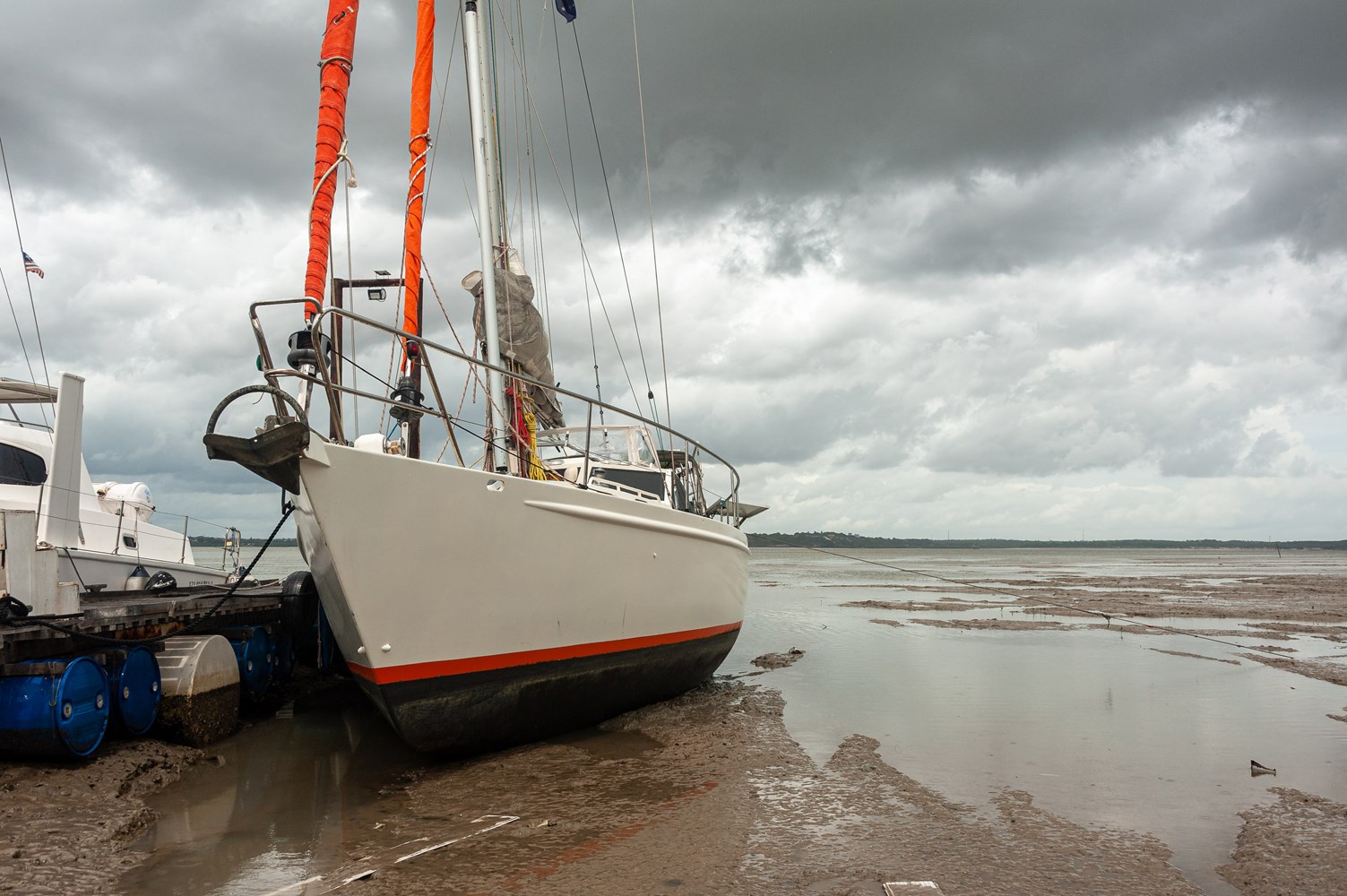
The keel and rudder have burried themselves in the soft mud and Anjea sits quietly, still tied to the pontoon. It's a strange feeling!
Friends
We are engaged in some urban exploration at the end of the marina street and enter a health food shop. The staff don't have a word of English and Merel's Spanish isn't getting us very far when another customer jumps in to translate. Within five minutes we are friends. Her name is Luisa and her husband, who also speaks a little English, is Eduardo or Dudu. We swap WhatsApp details and agree to catch up.
Next Sunday Luisa and Eduardo pick us up for a tour of the Historica, the Old Town, also known as Central. Sao Luis was established in the 1600s but the Old Town dates from late 1700s and 1800's when they started building with cement. I guess the very earliest buildings would have been wood and are long gone. Most of the buildings are solid two-story, boldly dressed in intricate brightly colored Portuguese tiles.
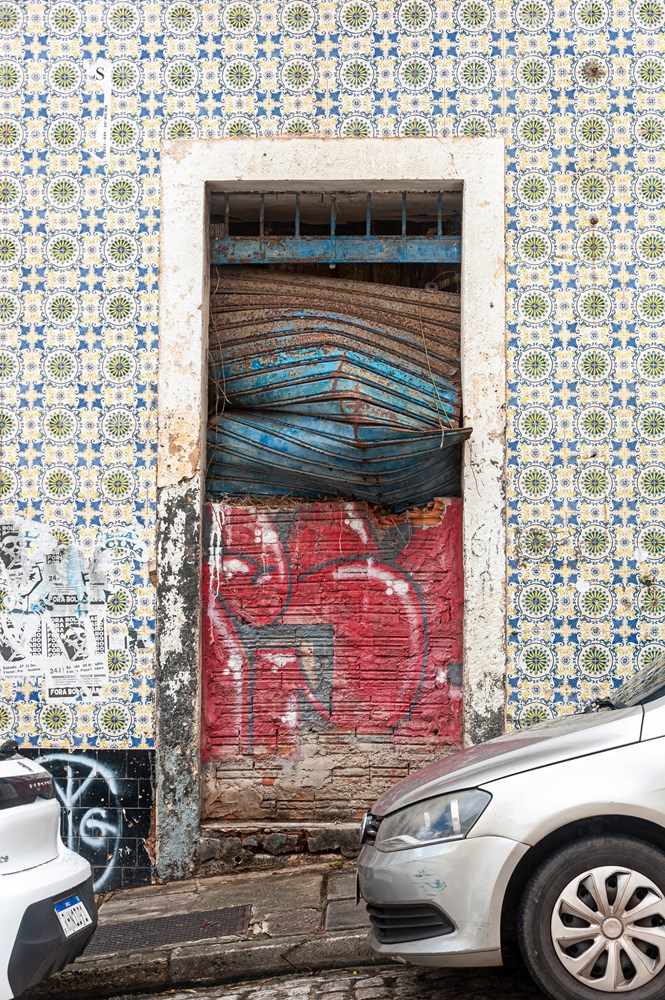
We all intuitively understand Newton's Second Law of Thermodynamics, which can be restated as everything eventually falls apart and buildings do not repair themselves. In Sao Luis the tension between the second law and the cost of countering it through historical preservation is resolved by doing nothing. Thus, historical buildings are mostly facades with degraded interiors, or no interior at all and in some house amazing jungles of Amazonian greenery.

In the Old Town shabby-chic is de riguer. Developers, like vultures, wait patiently for the last life to leave these still-beautiful old shells before stepping in to feast, but in the mean time the locals as well as the tourists enjoy the Old Town and it is buzzing with activity.
We head for Government House, a massive three-story white palace that faces onto the main town square in one direction and overlooks our anchorage on the other side of the bay in the other. We are welcomed at the entrance by a group of young people eager to show us around. The Governor lives in one part of the palace and we are being let into the old part, which is more a furniture museum than anything else. Our guide takes us thru a series of grand rooms with huge dark faded paintings hanging on the walls and lots of very uncomfortable-looking gilt and carved mahogany furniture that we are admonished not to touch. I try to follow the history but it's too complicated, even in the cut-down, suitable-for-tourists version.
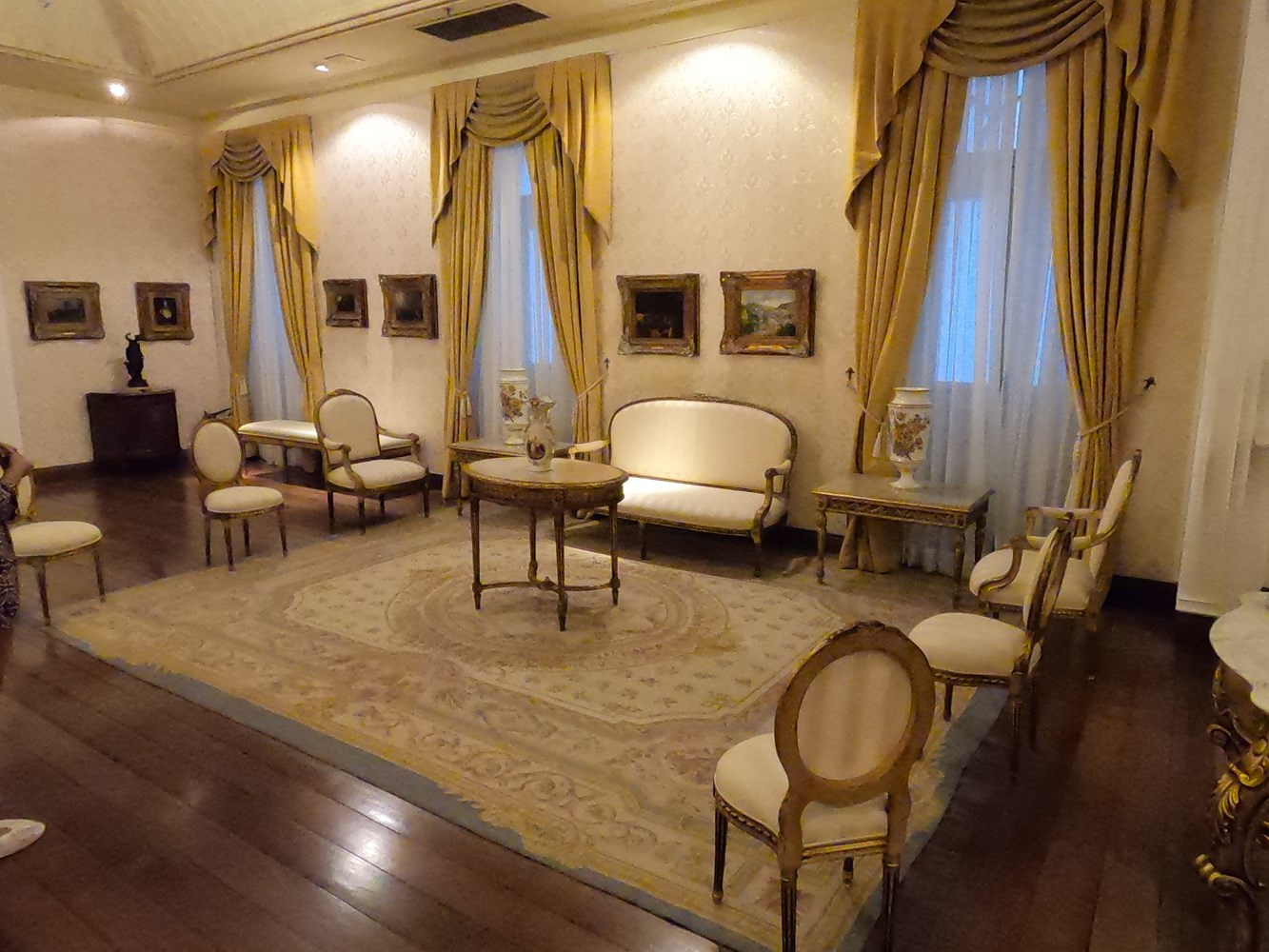
After, Eduardo drives us around part of the Old Town. He grew up here and knows the maze of streets like the back of his hand. I ask him to suggest a good ATM that might honor my debit card and we stop at a servo, a petrol station. I am dubious, having tried many banks and servos before, but this is a magic servo and thinks my card is just fine, dispensing Brazilian Reals by the wallet-full. One Real is about AUD0.33, plus an extortionate BR 24 ATM fee. Those Brazilian pirates are alive and doing very well thank you.
Saga of the Cards
First there was Amex and bank cards, then came Mastercard and Visa who revolutionized travel by eliminating travelers' cheques and undercutting Amex. Then there was the debit card, which cost a lot less provided you had the funds to back it. But not all debit cards are created equal. Some work in some ATMs and stores and some work nowhere. In the nowhere category is my expired Visa debit card, the replacement for which is sitting with my brother back in Australia waiting for me to stop moving long enough for him or Kareen to send to me.
I also have a NAB Travelers Card, which is a Mastercard and worked in South Africa, Namibia and Saint Helena, but with numerous problems. Several calls to Mastercard have failed to resolve them.
Some years ago I set up an account with Wise who offer a multi-currency Mastercard that I've never activated. So in Sao Luis I jumped thru the hoops, activated the card and transferred some AUD into it and voila! It worked! Kind of. In some places. In certain card machines on certain days. Anyway, in conjunction with the magic servo it has enabled me to get by in Sao Luis.
Festival of Sao Joao
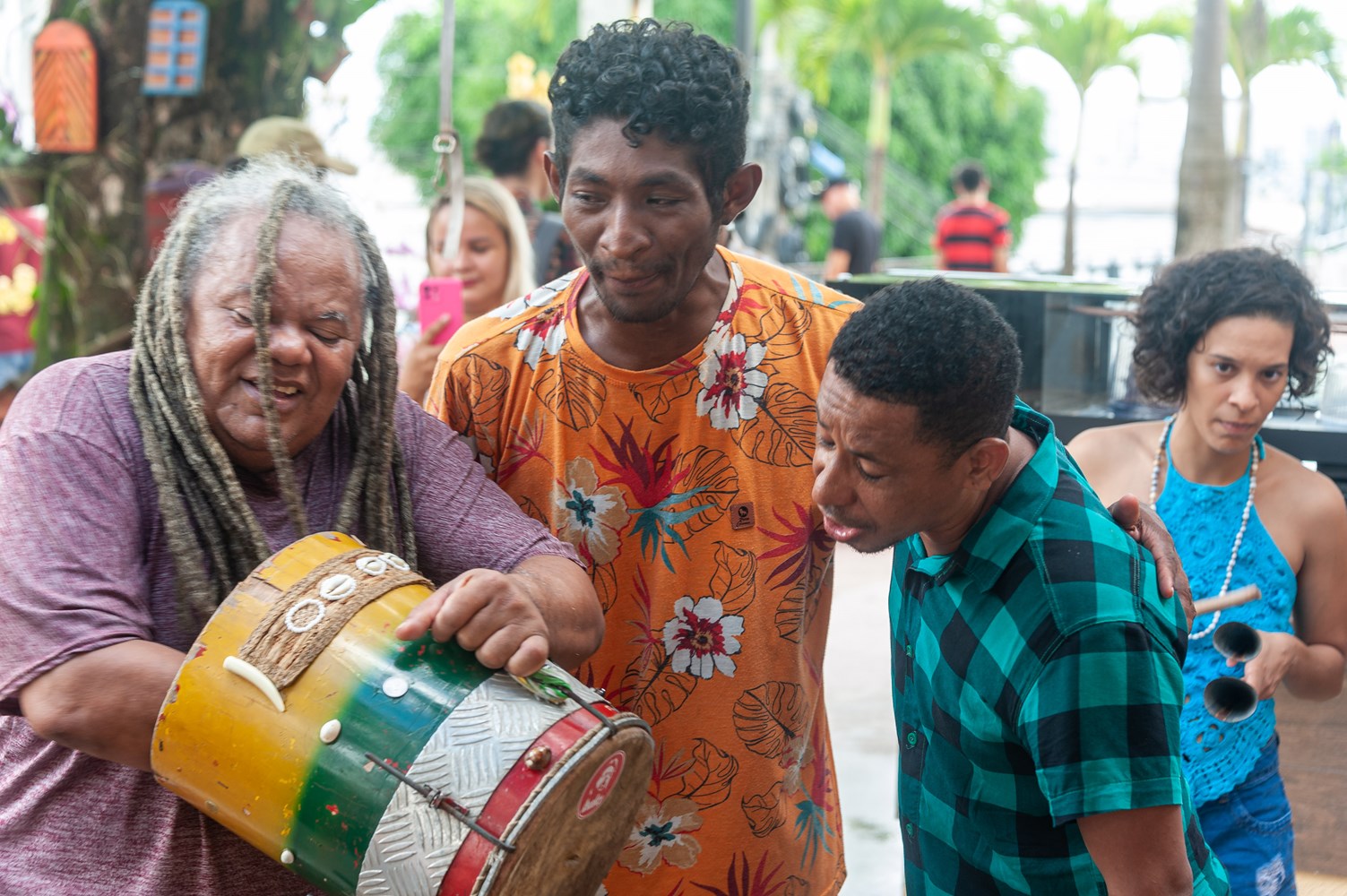
The following Sunday Luisa and Eduardo take us off to visit the Sao Joao Festival which has taken over the Old Town. This year the festival runs for two months, twice as long as normal to make up for being canceled last year due to covid. The festival has strong indigenous links as well as catholic christian influences — it's a mix of everything!
The streets are awash with color — a 'ceiling' of bunting has been installed, enclosing the streets and adding color and shade. There are people selling artifacts, crafts, and food, some of it junk, and some novel and quite beautiful. We sample some traditional snacks, avoiding the crab pickled in tequila.
Outside Government House a small spontaneous performance is underway with a bunch of musicians and some very unusual dancing that Merel describes as 'dance as a martial art'. It's called Capoeira and it's an indiginous martial art. It's athletic and the moves are martial, fighting motions, but coordinated and free of harmful intent. It is great fun and spectacular to watch, like watching an old Bruce Lee movie!
This is Sao Luis, the reggae capital of Brazil, and so a visit to the Reggae Museum is compulsory. Lots of photos of Bob Marley, Jimmy Cliff, Geffrey Morgan and other classic reggae musicians and not very much else.
Music is a HUGE thing in Brazil. It is a constant. There is always something/someone singing. Brazilian music is vocal rather than instrumental. The voice is the featured instrument and the backing is often fairly straight-forward with a good beat, great bass, and some instrumentation to keep things interesting -- accordion, flute, sax, guitar, brass, electronica, all sorts. Brazilian vocalists are superb. Coming from Australia, the land of AC/DC, it is a great pleasure to listen to them.
And where there is music like this, there is dance. You are clearly not a normal Brazilian child unless you are dancing by the age of two. Everyone moves to the music or makes their own, singing and clapping as they move to their own beat.
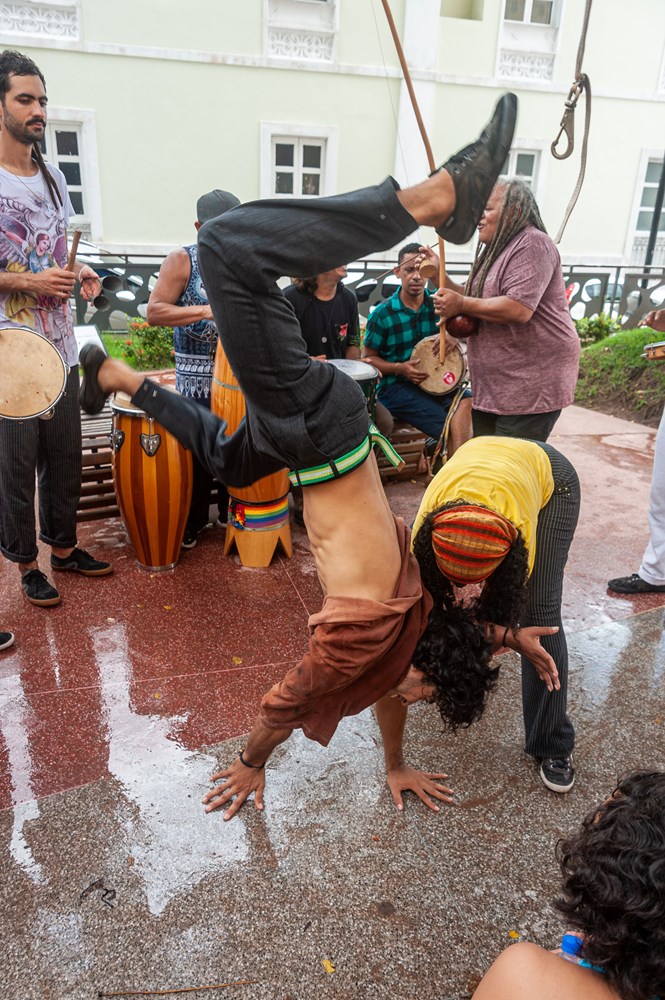
After two weeks in Sao Luis it is time to extract Merel, dissuade her from opening another bakery or cafe, and head for our next port.
Ilha dos Lençois
When we arrived at Marina Aven in Sao Louis I placed an anchor off the port stern to help keep Anjea upright in the mud and much discussion went into how we should go about retrieving it. It is totally buried in the mud without even the stock showing. I fear it could be very hard to get out. At one stage Merel planned to dig it out at low tide, but it would have been a dreadful task and even her exceptionally long legs may not have been enough to keep from sinking in the awful goo. Besides, shovels are not standard equipment on a cruising yacht.
In the end we decide to use the anchor winch. As the top of the tide approaches we walk the anchor rode forward to the winch at the bow, undo all the mooring lines except for one stern line to the pontoon, and haul. The bow comes around until it is directly over the anchor and the winch easily sucks it out of the mud, which is a lot softer than I imagined it might be.
Our destination is Ilha dos Lençois, one of a group of island off the Brazilian coast between Sao Luis and the Amazon. I have no knowledge of it other than Roy suggesting I visit some 'interesting islands north of Sao Luis'. He didn't give me a name but I could see only one group of islands that fitted and of those only one island seemed to offer an anchorage, although the charts didn't actually show that much detail — so we wing it.
The last day of May delivers us a dreadful sail. A few hours out we are hit with a northerly and then a north-westerly — close hauled to start with, pinching and then motoring directly into 20kn with short sharp seas that break over the bow and flood Merel's front cabin through the leaky hatch. After a couple of weeks stuck in the mud we are both without our sea-legs and are feeling very green and, for the first time in a long while, I come close to throwing up. On top of that I am starting to get concerned about the lee shore and the way the weather is going. I am unable to sleep while off-watch and I know I will be tired when it's my turn. With just two of us we have 4hrs on and 4hrs off at 1, 5 and 9 am and pm.
It's 1pm and my watch. The weather has not improved. I usually leave open the small hatches on top of the saloon so we have a little fresh air into the boat, but just as I am thinking about closing them a huge wave goes right over the boat, over the saloon top and thru the open hatches, saturating the saloon.
It collects the laptop, the Nikon, and soaks the settee. It is the final straw. I grab the Nikon and throw it onto my bunk, infuriated that I was stupid enough to leave it out. Unfortunately my aim is off and it collides with the corner of the cupboard, shattering the lens hood and severely damaging the lens. Reacting to adversity with anger isn't a good plan, I think, belatedly. I'm tired, worried about the un-forecast weather, and angry because I have caused this by my own inaction 1) by leaving the camera and laptop out and 2) by not closing the hatches earlier. I am more gentle with the laptop and it seems to have survived it's drenching.
It looks as if we are heading for serious weather but then we get a quick shower, the clouds divide to each side and the wind switches back to the gentle north-easterly that was forecast. At the same time our course eases as we close on Lençois and the final few hours are gentle. Both of us are too exhausted to set sails for the final downwind leg and so we motor-sail with three reefs in the main.
We arrive about 0130 in the morning and very gently motor towards some lights, probably fishing boats, watching the depths as we go. We stop at 6m and anchor. In the dark on an unknown tide it would be foolish to go further in. That foolishness can wait for the light of day.
Early in the morning we watch two French yachts come out of the channel. I hail Zig Zag on VHF and a very pleasant French female voice replies. Yes, we should have no trouble in the channel as it has a minimum depth of 2m. Well, 2m is what Anjea draws so it sounds touch and go but we're willing to try it on the afternoon rising tide.
Merel takes the helm and I navigate as best I can from the charts and Google satellite pics. The minimum depth we see is just under 3m. Once into the anchorage off the little village there is 8m, enough for us to anchor.
Approaching Lençois
For future reference and for those who like to explore here is our track:
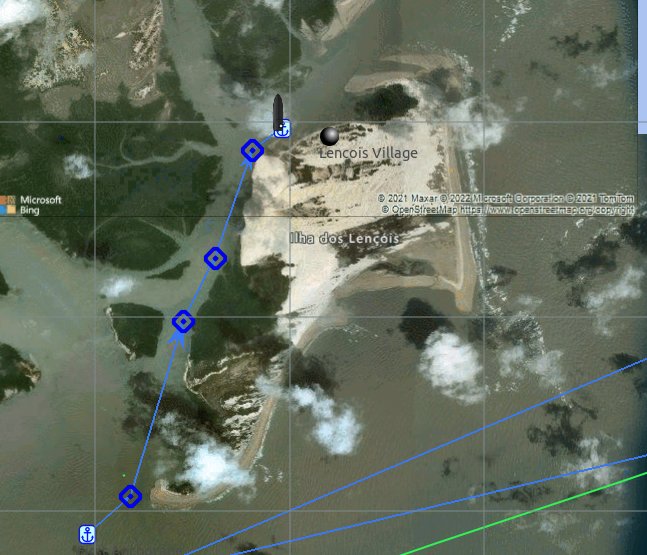
If you draw 2m or more then best attempt this near the top of a rising spring tide, although we managed to leave on a neap by carefully estimating the tide heights.
I could not find tide tables for this area and you will have to make your own, based on Sao Luis. It's a good idea to watch at least one tide cycle at anchor before attempting the channel.
Aim for a point about midway between the small islands and Ilha dos Lencois and watch depths. The bottom is sand and mud so if you travel slowly on a rising tide and do go aground you should be able to back off easily. It is places like this that I wish for a swing keel. Or even a catamaran! But no, not a cat!
Once you're off the village the next question is where to anchor. We choose to anchor close in because we have a row boat and the tidal current is fairly strong. But if you have an outboard on your dinghy then you are better off anchoring further north of northeast, away from the fishing boats that are constantly coming and going, usually with the stereo at full blast.
The tide goes out a long way and the exposed foreshore is mud and sand. Mostly, you can judge the tide well enough to avoid dragging your dinghy 50m or more, or swimming the same distance. If you think you will be away 4 hours then if you anchor the dinghy at the water's edge 2 hours before the tide turns then it will be equally as accessible on your return!
Lençois Village
The village is friendly but no English is spoken. Laura and her husband run a basic bar/restaurant and shop. Just the front porch of their house really, but it overlooks the beach, the beer is cold and cheap and if you ask they will bring out a table and chairs while you watch the sun setting over the water — and for 20 Real there is even WiFi! There are actually several similar shops around town. You need to shop around for most things, especially fresh food.
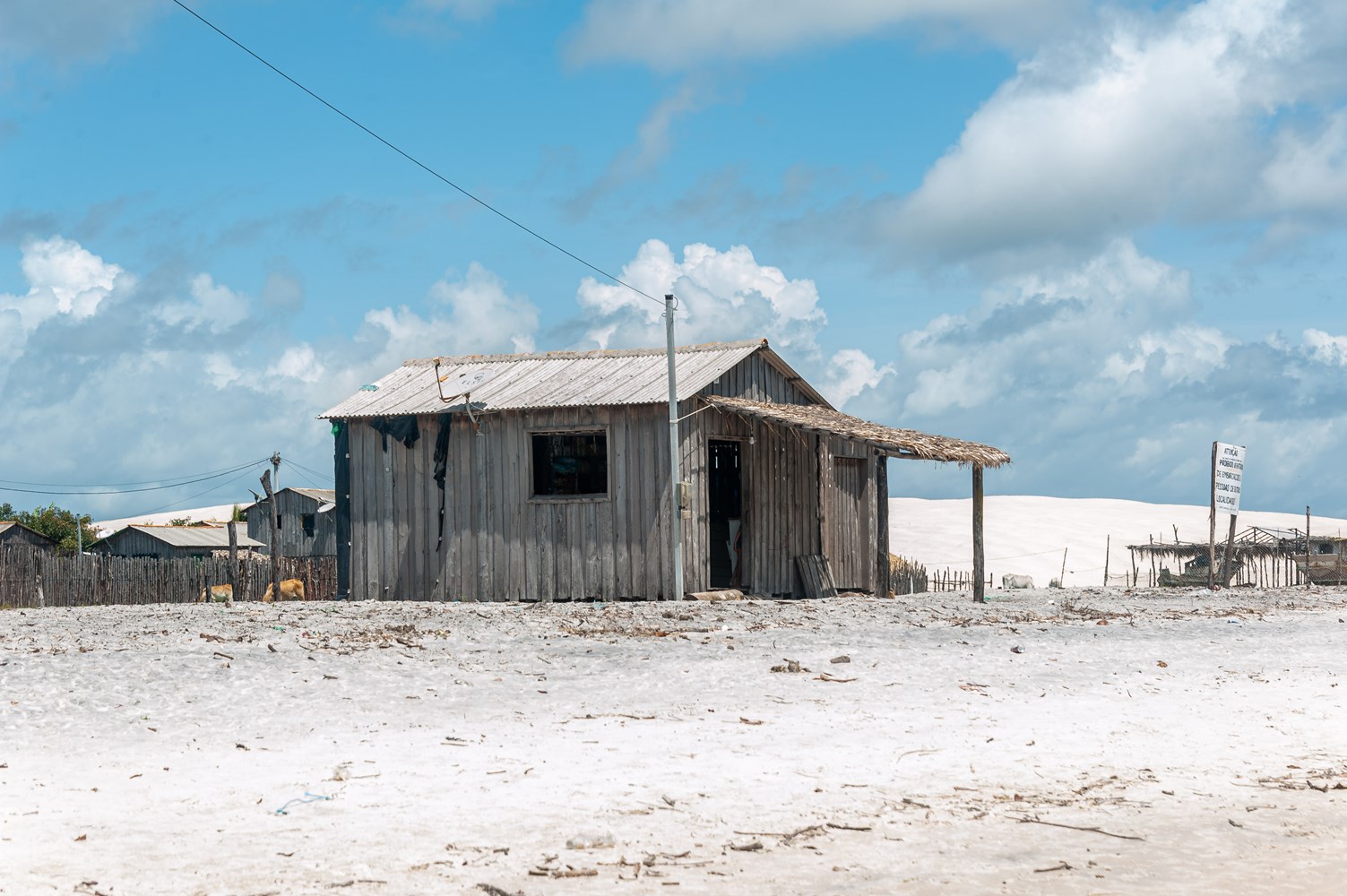
The main activity here is fishing from small one-man canoes with long-tail outboards to bigger boats with several crew, and the main leisure activities are football, beer, listening to music (all canned, I saw no musicians) and dancing. The music goes all day and night, varying only in volume. On Saturday night they really crank it up. If you enjoy football then you must make time to watch them play. The pitch is just a patch of sand that floods when it rains but the standard of play to my ignorant eye looks very good.
Merel is high on her day's experience and can't stop chattering. She went off this morning to explore and has virtually walked around the entire island as well as exploring the dunes and freshwater lakes in the interior where she went skinny dipping in sweet fresh water. So a few days later we both go to the freshwater lakes. These lakes form in the dunes and collect rainwater. They vary in quality from pristine to somewhat green. The lake we select is not as good as her secret lake, says Merel, but it will do. The water is soft and warm, a bit too warm really, but perfect for just floating weightlessly. I try to imagine what it must be like for astronauts who do without gravity for weeks.
The dunes cover more than half the area of Ilha dos Lençois and the locals make good use of them for a bit of privacy. The houses are small and crowded and the only place to 'get away' to is the dunes. It is not uncommon to come across children playing or adults playing other games in what they think is their own private valley.
There are no cars, no motor bikes, no dune buggies and no airstrip. To get anywhere you walk or go by boat. There is a communal solar power system feeding a 240V grid that runs around the town, and there is some wifi, but no mobile phone reception.
The perimeter of the island is populated by very healthy looking cows. Goats prefer to stay close to the village allong with the cats, dogs, ducks and caged birds. The village is also home to a large flock of vultures who scavenge everything. Their digestive system must be something else to survive on the putrid stuff they consume.
On Sunday I decide to fast for a day. The result is amazing. It's fixed my guts which have been dodgy for weeks now and I feel a lot more energetic. I really would like a 3 day fast but not while we're sailing, so it will have to wait.
We did not see much wildlife, but there was a large green iguanna dead on the beach being consumed by the vultures, and I snapped this eagle:

Our first attempt at leaving ends in confusion as I misread the tides and Merel goes off for a dip in her secret freshwater lake before we leave, and misses the top of the tide. After spending a minute blaming each other we agree that it was a total fuckup and we'll try again tomorrow. Next day I watch the incoming tide carefully and as soon as the depth equals our depth on arrival, we leave. Everything goes smoothly and our minimum depth of 3m in the channel is the same as when we came in.
Once we head out to sea some problems arise: first we are head-to-wind. Merel wants to bear away and tack but it's going to be hard to do that with the current against us, we would be tacking back and forth without making headway, so we motor. The next problem is the fishing boats. Merel spots the line of nets well before I see them. We turn left, into shallower water hoping that we can get around the fishing boat before running aground. We get around the first boat but there's another, and another. And then there is the third problem: a big black cloud is rapidly approaching and I really do not want to be dodging fishing nets in shallow water in a storm. But the storm is just a bit of wee and wind and we manage to clear all the boats and their nets without running aground and slowly make the turn to the north. As we turn the wind goes behind and after a few hours we are sailing with three reefs in the main and a full genoa poled out to windward, doing 7 knots on our way out of Brazil and into French Guyana, nearly 600nm away on the other side of the Amazon and the other side of the equator.